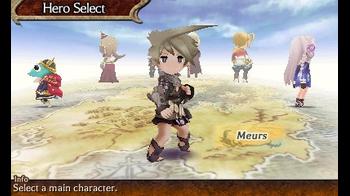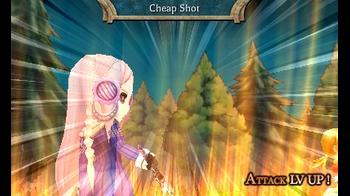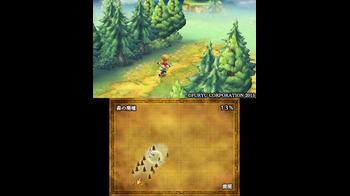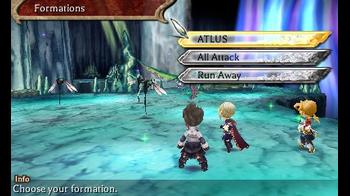The Legend of Legacy Review
If the only thing you knew about The Legend of Legacy was the title, you’d probably chuckle at how generic and redundant it is. I know I did. Some of the credits behind it, however, might perk your interest, such as ‘SaGa’ veterans like designer Kyoji Koizumi, or names like composer Masashi Hamauzu of Final Fantasy fame. With a few key names and an appealing art style, I found myself curious about what The Legend of Legacy may offer.
Indeed, the game has often been touted as a ‘SaGa’ title in all but name, with that core team behind the scenes. Unfortunately, I have little familiarity with that series of games directly, although I have played other SaGa-inspired titles. Often known for multiple protagonist perspectives and a unique combat skill system, The Legend of Legacy lives up to its credits, at least to a degree.
Seven adventurers make their way to the mysterious island of Avalon, each with an objective to achieve by exploring the uncharted landscape – be it solving mysteries or looking for treasure. This party soon finds themselves slowly unraveling the history of the island as they encounter dangerous monsters and shadows from the past.
Players select one of the characters to be their primary party member (who can’t be removed) and the other characters will join as support as the player progresses.
While the opening scenes will provide a basic motivation for character you pick, for the most part the narrative takes a back seat to other gameplay elements. Most of the game is spent exploring Avalon, fighting monsters, & finding treasures – with dialogue scarce and cutscenes even scarcer.
The Legend of Legacy is in many ways a traditional turn-based JRPG. Three party members take on enemy encounters by choosing their action for the round, which then takes place in order of agility. However, it places a slight twist on the usual experience and stat mechanics. Rather than straight experience-based ‘Levels’, instead, characters become more powerful through stronger skills and through ‘stance’ levels.
Essentially, characters in combat always have to be set in one of three stances: Attack, Guard, or Support, and offensive/defensive capabilities are directly affected by which stance characters are placed in.
This permutation of stances (called a ‘formation’) can be changed before any round to suit your battle needs for that turn. Stances and skills improve through exercised use - the more a character is in a certain stance, the more effective they become within that stance.
Similarly, stronger skills are obtained by often using similar style skills. For example, performing short sword skills often will both power up those abilities and unlock new short sword abilities. There are no hard rules as to when specifically skills will be learned – only a random occurrence that becomes more likely when fighting tougher foes.
These slight alterations to typical turn-based design were intriguing enough for a while. Interestingly, using stance and skill levels to determine my characters’ effective battle strength was kind of refreshing. Although character strength was obscured slightly because there aren’t really any straight stats (aside from HP), it wasn’t hidden enough to be frustrating and at the same time sensible enough to wrap one’s head around.
It's also worth noting that The Legend of Legacy is not an especially easy game. Many regular battles require a little thought and coordination to come out victorious - simply mashing attack will lead you to the game over screen sooner or later. While not difficult enough to be annoying, knowing when to block, when to heal, and when to run away will serve you well.
Outside of battle, the main objective is to chart the island. Really – your characters are given blank canvas on which you must wander around one of the several separated explorable zones, tracing borders in attempt to fill out each map to 100%. Once you’ve done this, you can sell the map for cash, and get new ones to repeat the process in new zones.
This is the general gameplay loop in a nutshell: fill out maps by wandering zones, fight battles to improve skills, rinse and repeat.
This is where The Legend of Legacy runs into some real issues. This overall gameplay design might have not been as problematic as it turned out to be if there was a little bit of variety in the game.
Unfortunately, most locations are structured in near identical fashion, with only a slight aesthetic difference to spice things up. Battles, too, also ultimately become somewhat stale, as the system largely gears itself to routine strategy and patterns. Even most new skills that you obtain during the game are simply more powerful versions of earlier ones that cost more SP.
Too many facets of the game recycle themselves - explorable zones start to blur together, the same types of enemies appear throughout the game with new colors, and even several of the boss creatures are simply palette swaps. If you've played the free demo of the game, that's largely what you can expect for about 30 hours after that.
Some aspects of The Legend of Legacy try to gear the game towards multiple playthroughs, with seven characters to choose from and increased bonuses (such as item drop %) for second playthroughs. Atlus USA tweaked some the carryovers to "New Game +" to reduce the grind a little, including transferring your gold to purchase equipment and items.
Regardless, the player would ultimately find themselves going through the same repeated, motions and that doesn't sound appealing to me after clearing the game once - especially because slight difference in character motivation isn't all too prevalent during most of the game.
On a final note, while the game generally looks great with the stylized art style, I ran into some performance issues during my time with it. Sometimes a normal encounter would arise with 6 or more enemies on the screen, and the framerate clearly starts to struggle trying to animate their idle movements. The final boss was the worst offender, with the game slowing down for essentially any attack he performed. [Note this was on a normal 3DS XL unit, not a 'New' 3DS.]
While the overall presentation and SaGa-inspired skill systems bring a little bit of flair - and there's an appropriate level of challenge throughout - battles alone aren’t quite compelling enough to make up for The Legend of Legacy’s repetitive structure or minimalistic narrative.



